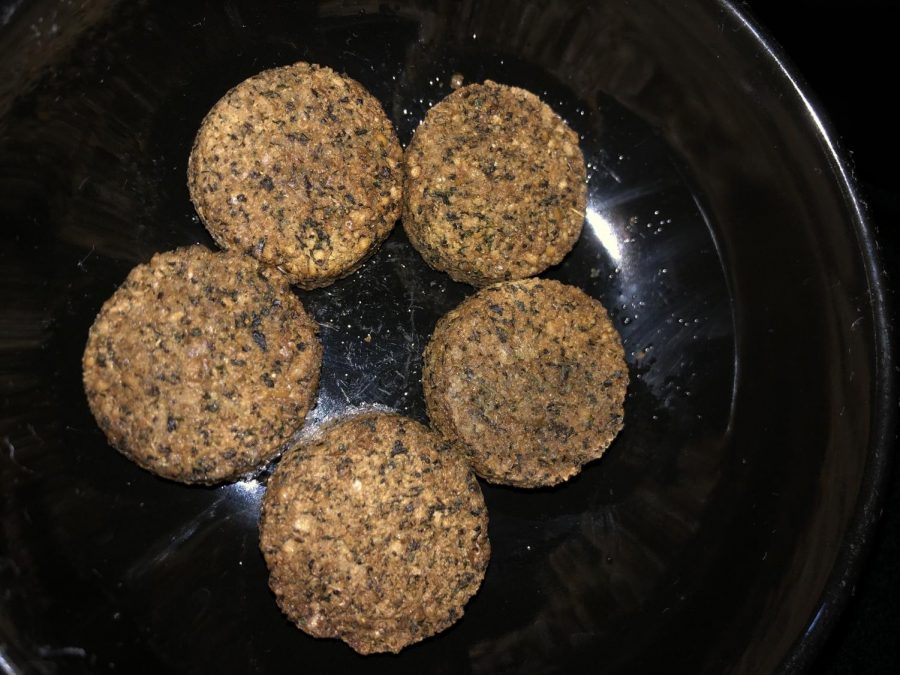Falafel — the inexpensive, crunchy crowd pleaser
A recipe for carnivores and herbivores alike
Say goodbye to dense dough balls; this falafel recipe includes fresh ingredients you can purchase on a budget. Plus, you can make your falafels as spicy and as big or small as you want. I always whip up a bright tzatziki-type sauce with my falafel which you can find instructions for down below. Make it vegan by substituting dairy yogurt with vegan yogurt!
This falafel pairs nicely with brown rice, quinoa, or on top of a pile of romaine lettuce. It would also be delicious wrapped inside of a warm pita bread.
Falafel Recipe
Tools needed:
Food processor or a large bowl with potato masher (I opt for the hand-mash so that I can control the consistency and get a little workout in)
Heavy skillet
Spoons
Spatula or other flipping device
Clean plate lined with paper towels
Ingredients needed:
Two 15oz cans of chickpeas (drained of their juices)
Four (or so) garlic cloves, minced
Cumin, turmeric, salt, pepper and cayenne to taste
Half of a small onion, minced
¼ cup packed minced parsley
¼ cup water
One tablespoon of lemon juice
⅓ cup flour
Oil for frying
Falafel sauce recipe:
One cup of Greekyogurt, with no sugar added
Three cloves of garlic, chopped
One lemon, juiced
A few sprigs of dill, finely chopped
One small cucumber, finely chopped
Salt and pepper to taste
Instructions:
As my culinary arts teacher in high school used to shout at us in French, “mise en place!” — meaning, have all of your ingredients measured, washed, chopped and prepared before you begin cooking. Having everything organized and put in place before you begin cooking will greatly reduce the need to scramble around the kitchen (unless, of course, that’s your thing).
Usually when I make this recipe, I will get the sauce out of the way first so that it can chill in the fridge and all of the flavors can meld together while I’m busy preparing the falafel. To make the falafel sauce, combine all of the ingredients together and give it a good stir. Make sure to taste the sauce, sprinkle in what you think is missing, and taste again — usually I’ll have to add more salt or lemon juice than I originally thought. Once the perfect balance of flavors is concocted, cover the sauce and let it chill out in the fridge.
Now it’s falafel time! Combine all of the ingredients, except the oil, in a large bowl or food processor and process or mash until a uniform dough-like consistency is formed. If mashing by hand, some elbow grease will inevitably be involved. Taste a small bite of the falafel dough and add more spices if necessary.
At this point, sometimes I will notice that my falafel dough is not super mushy and together. Everytime I make falafel it turns out differently; occasionally I will need to mix in an egg so that the dough sticks together in a more gooey-like fashion. Although crumbly falafel bits can be good, it can be really frustrating when you go to flip a perfectly round falafel and it falls apart in the pan.
Once you think that your raw falafel mix has reached the right consistency (which might occur through trial and error), heat up your skillet with a small amount of oil. Once the pan is really hot, carefully scoop up a glob of falafel dough with two spoons, plop it in the pan, and flatten it to resemble a little pancake-like shape (emphasis on little). Repeat this process until you can no longer fit any more falafel babies in the pan.
Cook the falafels until they are crispy and golden brown on each side. When they are done, carefully flip them out of the pan and onto a prepared plate covered with a paper towel. Repeat this cooking process until all of the dough is gone.
If cooking for one, there will inevitably be leftovers! Instead of cooking all of the batter at once and having soggy cooked falafel left over, I’d recommend saving the dough in a tupperware container in the fridge — it should be good for about a week.
Now it’s eating time! Plate your falafel by itself or with your desired sides and slather on the sauce. You can thank me later.

My name is Ashley Allen and I am a senior completing a BA in art history at Trinity University, with a minor in Medieval and renaissance Studies. I hope...
















